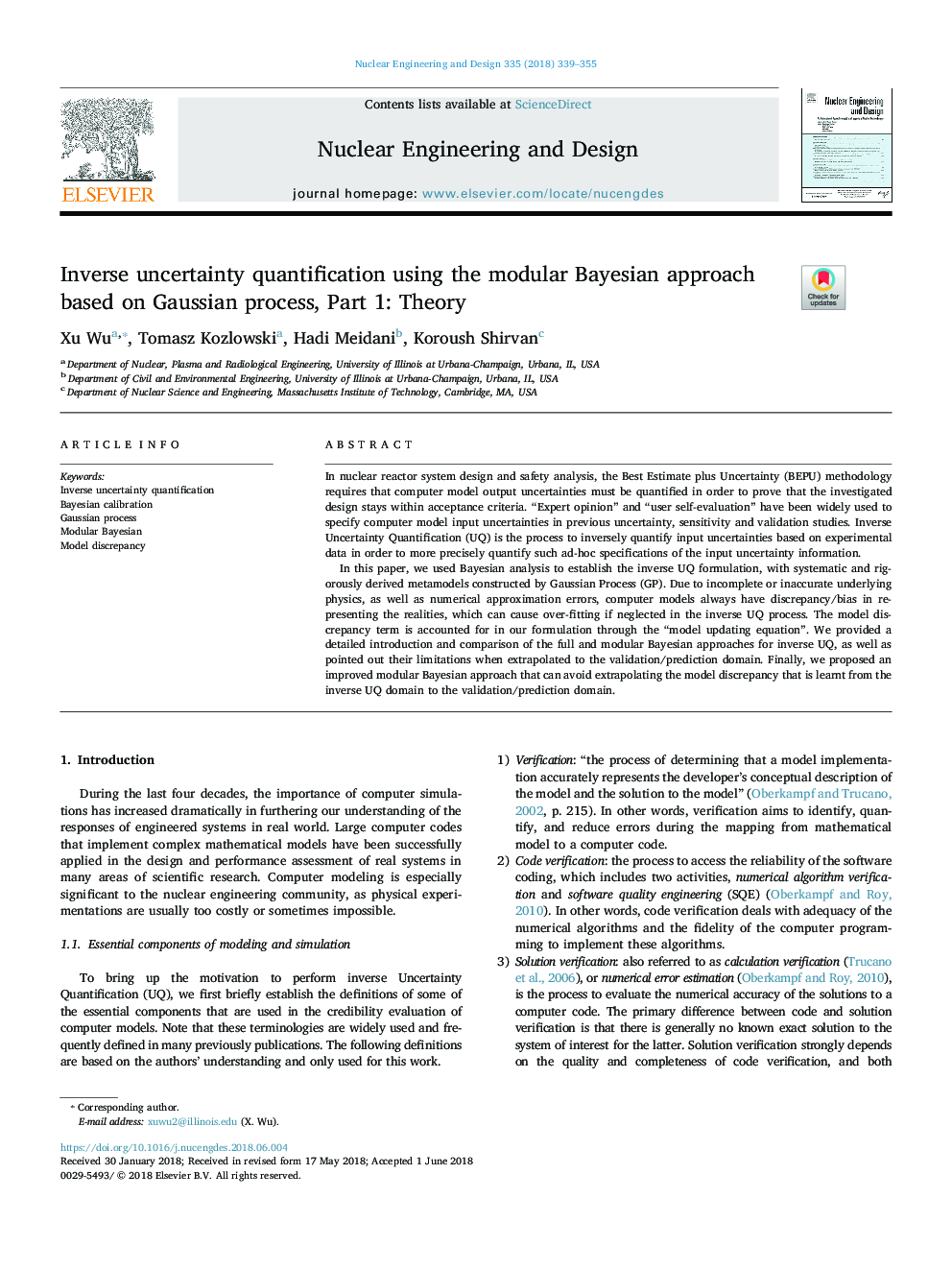| Article ID | Journal | Published Year | Pages | File Type |
|---|---|---|---|---|
| 6758784 | Nuclear Engineering and Design | 2018 | 17 Pages |
Abstract
In this paper, we used Bayesian analysis to establish the inverse UQ formulation, with systematic and rigorously derived metamodels constructed by Gaussian Process (GP). Due to incomplete or inaccurate underlying physics, as well as numerical approximation errors, computer models always have discrepancy/bias in representing the realities, which can cause over-fitting if neglected in the inverse UQ process. The model discrepancy term is accounted for in our formulation through the “model updating equation”. We provided a detailed introduction and comparison of the full and modular Bayesian approaches for inverse UQ, as well as pointed out their limitations when extrapolated to the validation/prediction domain. Finally, we proposed an improved modular Bayesian approach that can avoid extrapolating the model discrepancy that is learnt from the inverse UQ domain to the validation/prediction domain.
Related Topics
Physical Sciences and Engineering
Energy
Energy Engineering and Power Technology
Authors
Xu Wu, Tomasz Kozlowski, Hadi Meidani, Koroush Shirvan,
